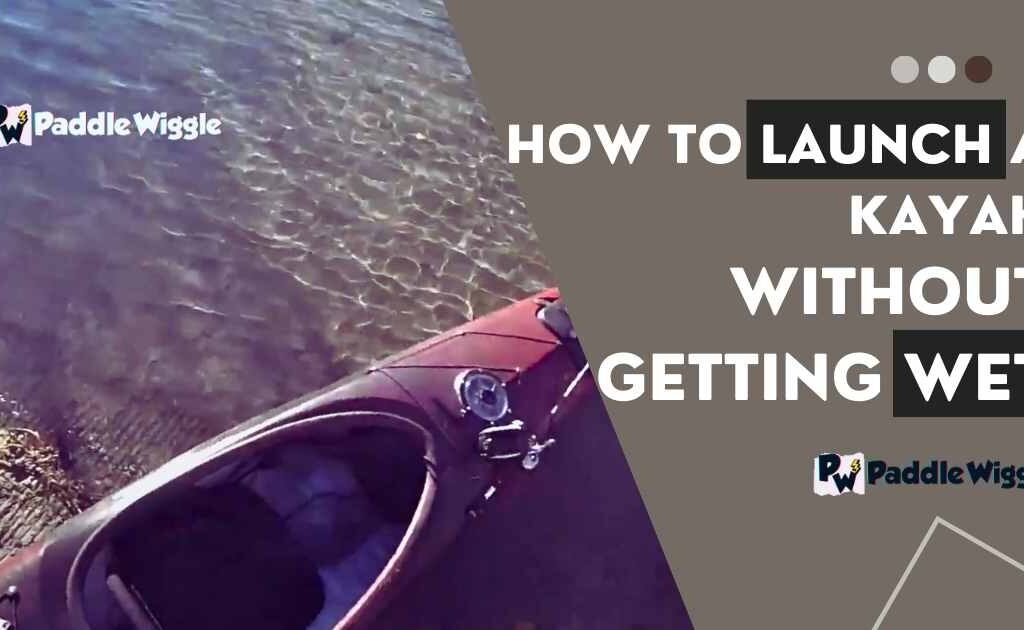Imagine gliding through calm waters, surrounded by lush landscapes and curious wildlife. Kayaking has become popular for people of all ages, allowing us to connect with nature uniquely and exhilaratingly.
But wait, what if you encounter alligators along the way? Alligators are fascinating creatures. But it’s important to understand how to stay safe and keep them at a distance while on the water.
So, how to keep alligators away while kayaking? The easiest way to do this is by keeping your distance! Imagine there’s an invisible circle around an alligator. To stay safe, we recommend you stay at least 30 feet away from that circle.
That’s about as long as a school bus parked end to end!
Giving alligators enough space reduces the chance of surprising or scaring them, which could make them feel threatened.
Remember, being prepared and knowing what to do is the key to having a fantastic and worry-free time on the water.
So let’s dive in and know how to do these effectively.
Contents
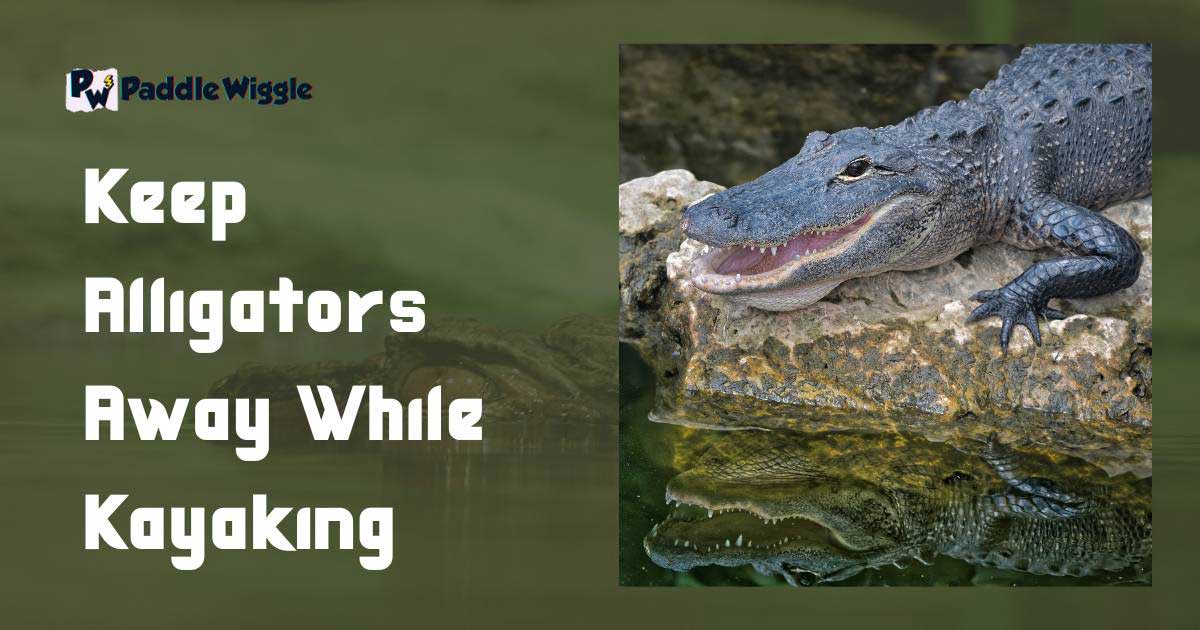

Understanding Alligators and Their Habitats
Alligators are fascinating reptiles that inhabit certain areas of the United States, especially in the southeastern states. They are big reptiles with long bodies, strong jaws, and a powerful tail.
Gators are well-adapted to living in freshwater environments like swamps, marshes, rivers, lakes,
During the warmer months, alligators are more active because their bodies work faster. But in the colder seasons, they tend to slow down and become less active.
While alligators usually prefer to stay away from humans, there might be times when they become curious or investigate objects in the water, like kayaks. This is their way of checking out what’s going on around them. It’s important to remain calm, avoid sudden movements, and give them space.
That’s why it’s really important to understand their habits and behaviors. This can help keep you safe, especially if an alligator comes too close!
And understanding alligator characteristics and their habitats is crucial for kayakers. This can save you, especially if one approaches you!
Let’s explore some behaviors and characteristics of Alligators:
They are carnivorous
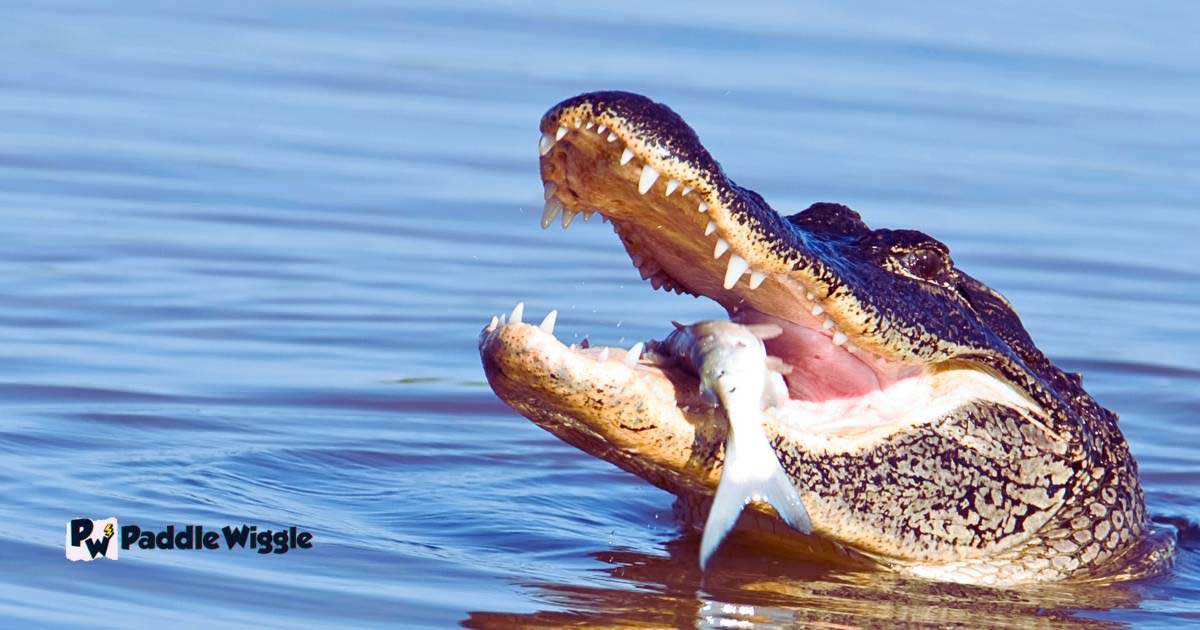

First, alligators are carnivorous, which means they eat meat. They have powerful jaws and sharp teeth that help them catch and eat their prey. They mainly eat fish, turtles, birds, and other small animals they find in their habitats.
Common Behavior
Alligators are generally cautious and tend to avoid human interaction. They perceive kayaks and kayakers as unfamiliar beings intruding on their territory. Alligators possess exceptional senses and can detect movements and vibrations in the water. However, they typically choose to keep their distance and retreat when they sense a human presence, preferring peaceful coexistence.
They Don’t Hibernate!
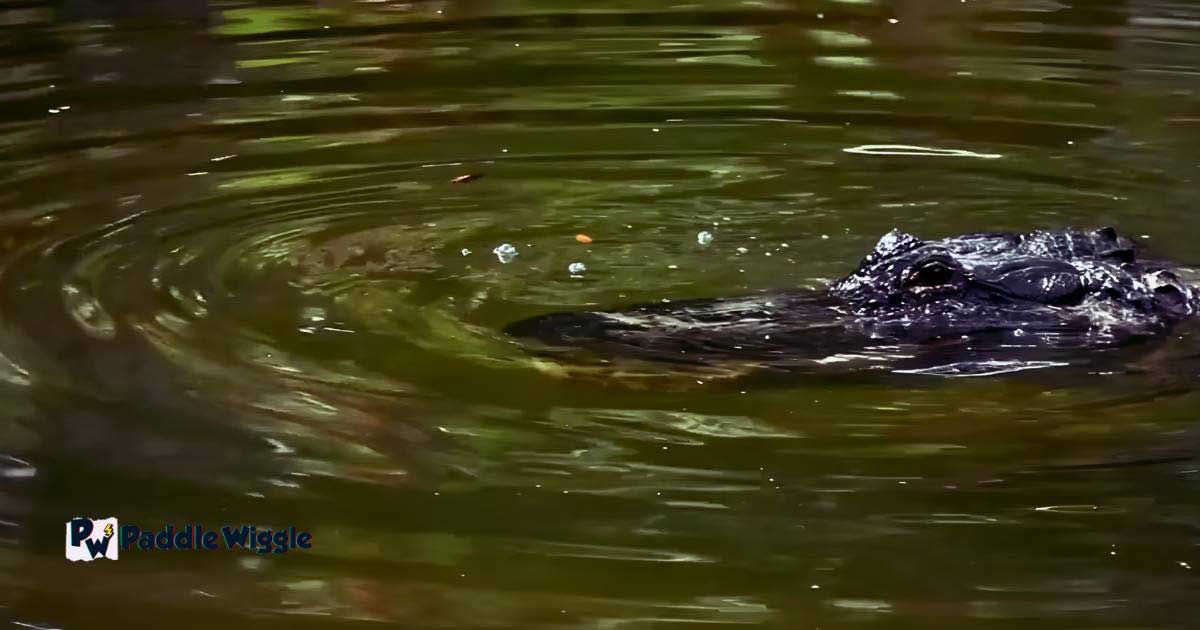

Did you know that alligators don’t hibernate like we do? They have a different way of resting. They can float or stay still in the water for long periods without moving much. This helps them conserve energy and stay hidden from predators or potential prey. So even though they don’t sleep like we do, they still get the rest they need.
Typical Habitats
Alligators can be found in various habitats, such as swamps, marshes, rivers, and lakes. These places provide them with everything they need to survive. They like to stay in areas with plenty of water and vegetation. These habitats offer them shelter, food, and a place to bask in the sun. And they are well-adapted to these habitats and play an important role in their ecosystems.
How alligators perceive kayaks


Have you ever wondered how alligators see and understand kayaks and the people inside them? If not, then let’s take a closer look.
Alligators have very sharp senses that help them make sense of their surroundings. When it comes to kayaks, alligators primarily rely on their excellent eyesight and keen hearing to notice them. Their eyes are on the sides of their head, giving them a wide field of view. This means they can see things coming from different angles, including kayaks!
When we go kayaking or participate in other water activities, it’s crucial to remember that we are sharing the alligators’ homes. They are wild animals and have their behaviors and instincts. Respecting their space and observing them from a safe distance is necessarily important.
Now, here’s the interesting part. Alligators have eyes that are good at detecting movement. When a kayak moves through the water, it catches the attention of an alligator. They might become curious and interested in this strange thing in their environment. It’s like a burst of excitement for them!
However, it’s important to remember that alligators are wild animals. They have their territories and might see kayakers as possible intruders. While alligators usually prefer to stay away, there might be times when they come closer to kayaks out of curiosity. This curiosity is natural because they want to investigate anything new or different in their surroundings.
But when are gators most likely to approach kayakers?
Alligators have an instinct to find food, just like any other animal. When kayakers through something on the water or try to get closer, it can confuse them!
They might think the kayaker is offering them something tasty to eat. This can make them approach the kayaker, hoping for a snack!
Remember never to feed alligators or wildlife while kayaking or exploring their habitats.
Learn How To Respond to Alligator Encounters
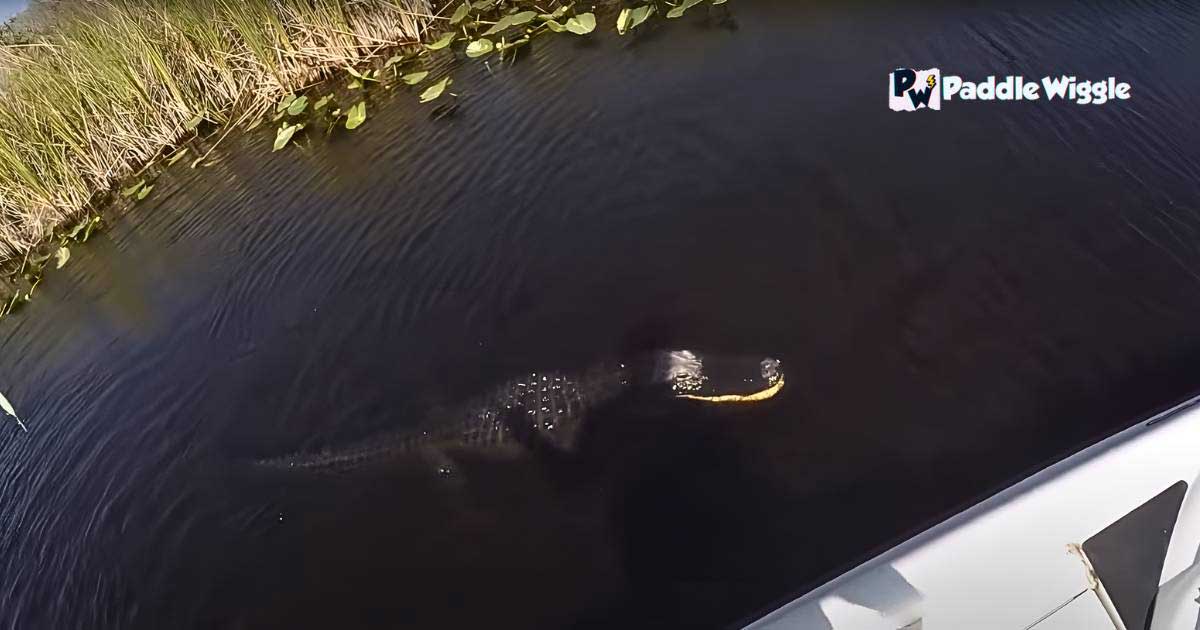

Encountering an alligator can be a thrilling and potentially intimidating experience. But it’s important to be prepared. And it’s crucial to know what to do to ensure your safety.
Here’s how to respond if you ever encounter an alligator:
Stay Calm: If you see an alligator, try to stay calm. Feeling scared or surprised is natural, but panicking can make the situation more dangerous.
Keep Your Distance: Alligators are wild animals and should be given space. Stay at least 30 feet or 10 meters away from them. That’s about the length of two school buses parked end to end!
Avoid Feeding: Never try to feed an alligator. Feeding them can make them associate humans with food, leading to more encounters and risky situations.
Move Away Slowly: If you find yourself too close to an alligator, slowly and calmly move away. Do not make turn your back on it or run, as this might trigger their instinct to chase.
Use Noise or Waves: If an alligator starts approaching you, try making loud noises or splashing water with your paddle. This can help scare them away.
Alligator Avoidance Strategies
When it comes to alligators, they usually don’t want to interact with us humans. But it’s still important to know how to avoid them and make sure they’re not attracted to us. So, when venturing into alligator territory, it’s really important to know how to avoid coming across these incredible creatures.
By learning how to make yourself less attractive to alligators and being cautious, you can explore their homes without any concerns.
Now, let’s explore some of the best ways to avoid and keep alligators away while kayaking.
Be Alert and Pay Attention
One of the most important things to remember when trying to avoid alligators is – to stay alert and aware of your surroundings. Look out for signs that alligators might be nearby, such as ripples in the water or logs that look like alligators. It’s also a good idea to avoid areas where alligators are known to live.
Maintain a Respectful Distance
To stay safe, keeping a respectful distance from alligators is essential. A good rule of thumb is to stay at least 30 feet away from them. This will help ensure your safety and reduce the chances of accidentally getting too close to their territory.
Minimize Noise and Splashin
Alligators can be attracted to excessive noise and splashing. Keep quiet and minimize splashing in the water to avoid drawing their attention. By doing this, you’ll reduce the chances of alligators seeing you as a potential threat or a source of food.
Keep Pets Leashed and Children Close
Keeping them under control is important if you’re kayaking with pets or young children. Make sure your pets are on a leash to prevent them from wandering off and possibly approaching alligators. Keep eyeing children to ensure they don’t get too close to alligator habitats.
Never Feed Alligators
Whether intentionally or accidentally, feeding alligators is extremely dangerous and against the law. Feeding disrupts their natural behavior and can make them associate humans with food. This can lead to more encounters and potentially dangerous situations. Remember, never try to feed or attract alligators in any way.
Be Cautious During Nesting Season
Alligators are very protective of their nests and babies during nesting season, usually from April to June. Take extra caution and be extra watchful during this time. Avoid going near nests or disturbing alligator parents and their young.
Preparing for Alligator-Prone Kayaking Areas
When you go kayaking in alligator infested water, it’s important to be extra careful and ensure you have a great time. Here are some things you should do to get ready for kayaking in alligator-prone areas:
Research and Plan Your Route
Start by researching the specific regions or areas known for having alligators. Research the waterways and consult maps to identify areas where alligators are less likely to be present. It’s simple to plan a kayak trip but it might seem tricky in your first days.
You can ask local authorities or experts for information about alligator presence in those areas. This will help you understand the potential risks and make informed decisions.
Pack Gator Repellents
Pack essential items such as insect and alligator repellent and a first aid kit. It’s also a good idea to carry a whistle or other signaling device in case of emergencies.
Practice Alligator Avoidance Techniques
Remember the alligator avoidance strategies we discussed earlier, such as maintaining distance, minimizing noise and splashing, and avoiding feeding them. Practicing these techniques reduces the chances of attracting alligators and minimizes the risks.
Plan To Travel in Groups
Whenever possible, kayak with a buddy or in a group. This enhances the overall kayaking experience and provides an added layer of safety. Stick together and keep an eye out for each other to ensure everyone’s well-being.
Know How to Deter Alligators From Approaching
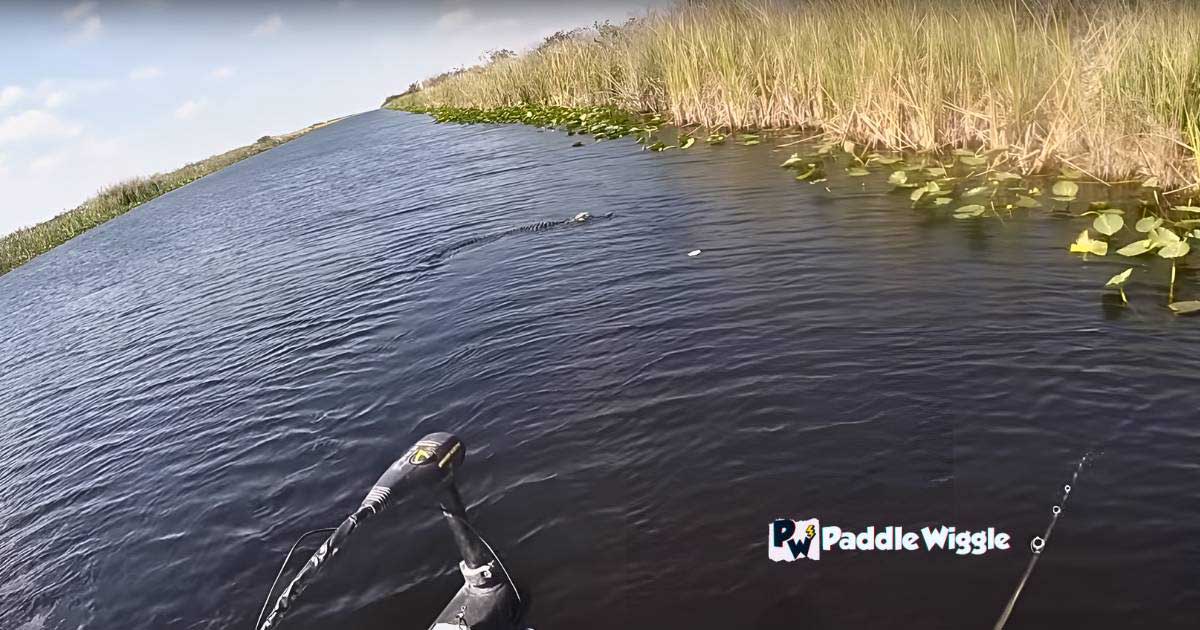

recreating in areas where alligators are present can be an exciting experience, but it’s essential to know how to deter alligators from approaching to ensure safety for both humans and these remarkable reptiles.
Alligators are generally cautious creatures, but understanding their behavior and taking appropriate precautions can help minimize the risk of unwanted encounters. Here’s what you need to know:
Alligator repellent spray
Alligator repellent spray is a special product that some people use to try and keep alligators away when they go kayaking. It’s like a spray that you can use to make alligators not want to come near you. But here’s the thing: scientists aren’t sure if it actually works or not.
Alligators are smart and can be tricky to predict. So even if you use the repellent spray, there’s no guarantee it will keep alligators away.
Instead of relying solely on repellent sprays, it’s best to focus on other strategies for deterring alligators.
Back Away Slowly
If you find yourself too close to an alligator, slowly back away while keeping an eye on its movements. Avoid turning your back on the alligator, as sudden movements might trigger their instinct to chase.
Make Noise
Alligators generally prefer to avoid loud and noisy environments. When you’re in areas where alligators might be present, talk, sing, or clap your hands to create sound. This alerts them to your presence and gives them a heads-up to stay away.
Keep Your Snacks Secure!
It’s important to store any food or snacks in tightly sealed containers while kayaking. Alligators have a keen sense of smell and may be attracted to the scent of food. Keeping your food secure prevents you from drawing their attention and potential encounters.
Keep a secure distance
Always maintain a safe distance from alligators. Stay at least 30 feet away, and never try to approach or touch them. Respect their space and remember they are wild animals with territories.
LEARN MORE
What Should I Do If I Spot An Alligator While Kayaking?
Staying calm and maintaining a safe distance from the alligator is important. Slowly and quietly paddle away, giving the alligator plenty of space.
Can I Use Any Specific Colors Or Patterns To Deter Alligators While Kayaking?
Bright and contrasting colors like orange or yellow can help deter alligators. Avoid wearing colors that resemble their natural prey, such as dark greens or browns.
Are There Any Particular Seasons Or Times Of The Day When Alligator Encounters Are More Common?
Alligator activity can increase during the warm months and their breeding season, typically in spring. They are generally more active during early morning and late afternoon.
What Should I Do If An Alligator Approaches My Kayak Aggressively?
It’s essential to make yourself appear larger by raising your paddle or any available equipment. Make loud noises, yell, and splash water to discourage the alligator from approaching further.
Can I Use Alligator Repellents Or Sprays To Deter Gators?
Some alligator repellents or sprays are available on the market, but their effectiveness can vary. Researching and following local regulations and guidelines regarding using such products is important.
Final Word
Knowing how to deal with alligator encounters and keep them from approaching too close to you is important as you go on your adventures.
First, always stay alert and be aware of your surroundings. Keep a safe distance from alligators and avoid doing things that might get their attention, like making loud noises or splashing in the water. It’s best to stay calm and avoid sudden movements that could make them curious in you.
Remember, never try to feed or approach alligators. This is not safe and can disrupt their natural behavior. Alligators are wild animals, and it’s best to admire them from a distance.



